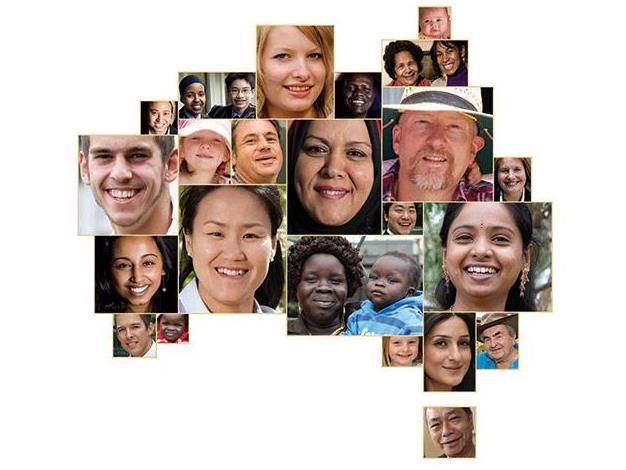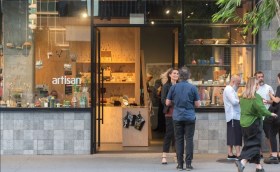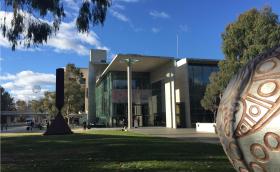Photo: DFAT
I exhaust myself at times with my own rhetoric on attracting culturally diverse audiences. It’s been 20 years saying almost the same thing!
Yet, the Australian arts sector, unlike the American one, still avoids active, long-term and financially-important engagement with culturally diverse audiences.
There is much discussion, and some action on culturally diverse casting, cross-cultural collaborations and community engagement. Yet, the funded arts miss out on an untapped audience and a future patron pool among Australia’s culturally diverse citizens, up to 45% of the total population.
These potential audiences love and know the arts instinctively. Many hundreds – sometimes thousands – of years of art, music and song, storytelling and literature, theatre and performance, carnival and festival are locked into these audiences’ cultural DNA, so why aren’t we trying harder to sell them tickets?
Cultural diversity in the arts has increased. There are more actors, musicians, dancers and directors, producers reflecting Australia’s diversity. There are gaps and blockages, but things are better.
On the other hand, cultural diversity among audiences in the funded arts is still too low. With exceptions, mostly we see ‘arts audiences’ at arts events and we sort of know them.
There is nothing wrong with preaching to the converted, it’s the first law of good propaganda. So why are we not preaching to a larger converted audience? Is it because we don’t know how? Or, is it because we don’t want them in?
More likely it’s because of our comfort zones. It’s far more comfortable putting on a contemporary theatrical program say on an Indian mythological theme, than trying to use the Indian media and their networks to get more Indians to come to the show. Yet, many of the 117,000 Indians in Victoria participate in cultural events, film festivals, music productions and plays within their communities.
Donna Walker-Kuhne America’s, leading expert of audience diversification in her book Invitation to the Party: Building Bridges to Arts, Culture and Community asks, ‘Are they (culturally diverse) people being invited to the arts?’ The answer by enlarge in Australia is, ‘No’.
George C Wolfe, of New York’s Public Theatre, instructed Walker-Kuhne in the mid 1990s to make the theatre a venue that, ‘looks and feels like a subway stop in New York City’, a multi-ethnic and inter-generational space.
How many funded theatre companies’ foyers, stages, staff and boards, mirror Australia’s urban and suburban train stations, tram or bus stops?
Too often culturally diverse audience development is seen as a ‘special needs project’ predicated on notions of welfare. It’s about reaching out, breaking barriers, and letting them in – when in fact they are already in. Is it the arts sector that ignores these audiences, or do they ignore us?
Welfare is not what culturally diverse audiences need, especially as they represent more rapid class and economic ascendance than third generation Anglo-Australians. If only five percent of all Greek lawyers, Indian and Chinese doctors, headed for our shows we’d do much better.
Most culturally diverse Australians fitting in the bandwidth of the arts audience, i.e., 25 years to 59 years, are aspirational, educated, professional and well healed. They watch more subtitled films, listen to more music in languages other than English, and languages other than their own. They support ‘globalisation’ and ‘cosmopolitanism’ far more than long-term Anglo-Australians.
Studies point to how children of immigrant parents tend to succeed in terms of educational and occupational outcomes, when compared with their parents’ generation as well as in comparison to their Anglo Celtic peers. There is greater upward mobility by the children of Vietnamese, Greek, and Chinese immigrants than the children born of long-term Anglo Celtic parents and the children of immigrants originating from north Western Europe such as those from German and Dutch background.
Culturally diverse Australians do not have their cultural and entertainment consumption determined by their cultural background. A programmer does not have to have a specific cultural product to secure culturally diverse audiences, while it may assist. My mother loves Nat King Cole as much as Maria Farandouri.
An arts marketer’s awareness of culture, language and faith as drivers, motivators to cultural and arts consumption, though, does make a difference in the way one communicates to culturally diverse segments. I never tire of seeing new versions of Ancient Greek tragedies or comedies. But they often struggle to secure an audience in Melbournme, a city with one of the largest Greek populations in the world. Why? Simple. Someone forgot to tell the Greeks!
Always a good litmus test is the advertising spend financially and in human resources on non-Anglo media by arts organisations, small, medium or large.
I hope I am wrong, but I doubt it is significant enough to make a difference. At the same time, I am in no doubt that banks, political parties, car retailers, telecoms, fast food retailers spend more on ads in ethnic media, strategic marketing and engagement events for culturally diverse citizenry.
For example Westpac in 2009 identified Chinese-Australians as a key target market. Chinese Australians have double the average Australian income and carry double the debt of the average Australian. There are many other examples.
This discussion continues and for that matter another Fotis, Photius, around 478 BCE, wrote how during the drama festivals in honour of Dionysus, the competition for the seats, was so furious it involved ‘citizens in violence and injury’.”
Photius informs us that the people decided that admission to performances should no longer be free and a charge for seating was imposed. The poor were immediately disadvantaged, because they couldn’t afford the prices. In response, the Athenians passed a decree limiting the ticket price to one drachma.
More than 2,000 years later appropriate pricing with targeted advertising and programming could do much to increase culturally diverse audiences.






